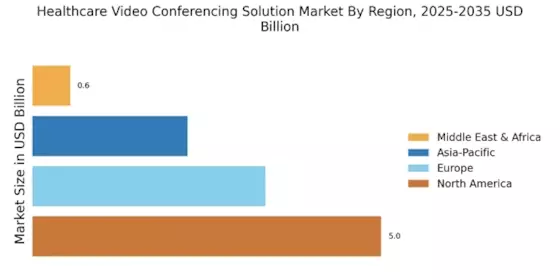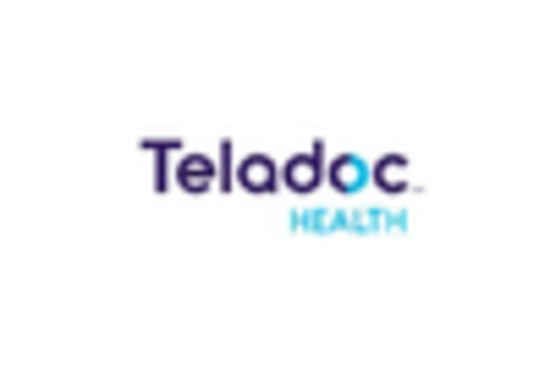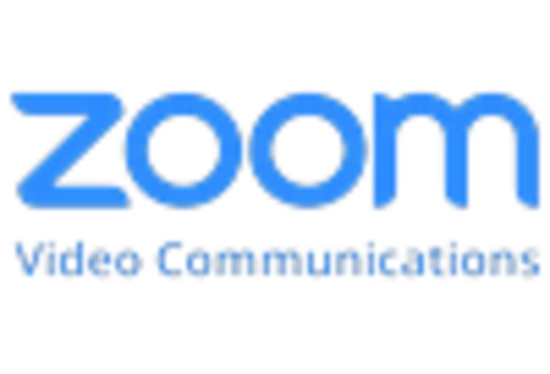North America : Leading Innovation and Adoption
North America is the largest market for healthcare video conferencing solutions, holding approximately 45% of the global market share. The region's growth is driven by increasing telehealth adoption, regulatory support, and technological advancements. The COVID-19 pandemic accelerated the demand for virtual healthcare services, leading to a surge in investments and innovations in this sector. Regulatory frameworks, such as HIPAA compliance, further bolster market growth by ensuring patient data security and privacy. The United States is the primary player in this market, with significant contributions from Canada. Key players like Zoom Video Communications, Microsoft, and Teladoc Health dominate the landscape, offering robust solutions tailored for healthcare providers. The competitive environment is characterized by continuous innovation and partnerships aimed at enhancing service delivery. As telehealth becomes mainstream, the presence of these key players is expected to expand, driving further market growth.
Europe : Emerging Market with Growth Potential
Europe is witnessing a rapid increase in the adoption of healthcare video conferencing solutions, holding around 30% of the global market share. The growth is fueled by rising healthcare costs, an aging population, and a shift towards remote patient monitoring. Regulatory initiatives, such as the European Union's Digital Health Strategy, are pivotal in promoting telehealth services across member states, enhancing accessibility and efficiency in healthcare delivery. Leading countries in this region include Germany, the UK, and France, where healthcare systems are increasingly integrating video conferencing solutions. The competitive landscape features both established players and emerging startups, fostering innovation. Companies like Cisco Systems and Doxy.me are at the forefront, providing tailored solutions that meet diverse healthcare needs. As regulations evolve, the market is expected to grow, driven by increased investment in digital health technologies.
Asia-Pacific : Rapid Growth and Adoption
Asia-Pacific is rapidly emerging as a significant player in the healthcare video conferencing market, accounting for approximately 20% of the global share. The region's growth is driven by increasing smartphone penetration, rising healthcare expenditure, and a growing awareness of telehealth benefits. Governments are actively promoting digital health initiatives, which are crucial in addressing healthcare access challenges, particularly in rural areas. Countries like China, India, and Australia are leading the charge, with a mix of public and private sector investments in telehealth solutions. The competitive landscape is diverse, featuring both local startups and international players like Amwell and VSee. As the region continues to embrace digital transformation in healthcare, the demand for video conferencing solutions is expected to surge, supported by favorable regulatory environments and technological advancements.
Middle East and Africa : Emerging Market with Unique Challenges
The Middle East and Africa region is gradually adopting healthcare video conferencing solutions, holding about 5% of the global market share. The growth is driven by increasing internet penetration, a rising focus on healthcare accessibility, and government initiatives aimed at improving healthcare infrastructure. However, challenges such as regulatory hurdles and varying levels of technological adoption across countries can impact market growth. Leading countries in this region include South Africa, the UAE, and Kenya, where healthcare systems are increasingly recognizing the value of telehealth. The competitive landscape is characterized by a mix of local and international players, with companies like Lemonaid Health and Maven Clinic making strides in the market. As governments continue to invest in digital health initiatives, the potential for growth in this sector remains significant, paving the way for innovative solutions to address healthcare needs.


















Leave a Comment